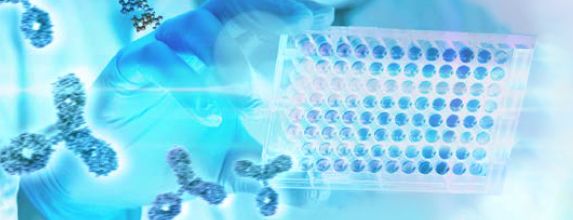Search Thermo Fisher Scientific
AKT Pan/Erk1/2 ELISA Kits
ELISA kits are commonly used to measure soluble biomarkers across a variety of research areas. ELISA kits for Human AKT Pan/Erk1/2 can be quantified in cell lysate samples.
Invitrogen ELISA kits exist in two formats: Uncoated and Coated.... ELISA kits are commonly used to measure soluble biomarkers across a variety of research areas. ELISA kits for Human AKT Pan/Erk1/2 can be quantified in cell lysate samples.
Invitrogen ELISA kits exist in two formats: Uncoated and Coated. Uncoated ELISA kits... ELISA kits are commonly used to measure soluble biomarkers across a variety of research areas. ELISA kits for Human AKT Pan/Erk1/2 can be quantified in cell lysate samples.
Invitrogen ELISA kits exist in two formats: Uncoated and Coated. Uncoated ELISA kits include all the necessary reagents to coat your own plates and run your assay with maximum flexibility. Coated ELISA kits are ready-to-use and quality tested for sensitivity, specificity, precision and lot-to-lot consistency....
Invitrogen ELISA kits exist in two formats: Uncoated and Coated.... ELISA kits are commonly used to measure soluble biomarkers across a variety of research areas. ELISA kits for Human AKT Pan/Erk1/2 can be quantified in cell lysate samples.
Invitrogen ELISA kits exist in two formats: Uncoated and Coated. Uncoated ELISA kits... ELISA kits are commonly used to measure soluble biomarkers across a variety of research areas. ELISA kits for Human AKT Pan/Erk1/2 can be quantified in cell lysate samples.
Invitrogen ELISA kits exist in two formats: Uncoated and Coated. Uncoated ELISA kits include all the necessary reagents to coat your own plates and run your assay with maximum flexibility. Coated ELISA kits are ready-to-use and quality tested for sensitivity, specificity, precision and lot-to-lot consistency....
Sensitivity
Assay Range
Sample Volume
Cell Lysate
20 µL
Time To Result
1 hr 10 min
(1 hr 20 min hands-on)
Price
Cat #85-86014-11
96 Tests
Not finding what youre looking for? Create Your Own ELISA



Performance Guarantee
If an Invitrogen™ antibody doesn't perform as described on our website or datasheet,we'll replace the product at no cost to you, or provide you with a credit for a future purchase.*
Learn more
We're here to help
Get expert recommendations for common problems or connect directly with an on staff expert for technical assistance related to applications, equipment and general product use.
Contact tech support